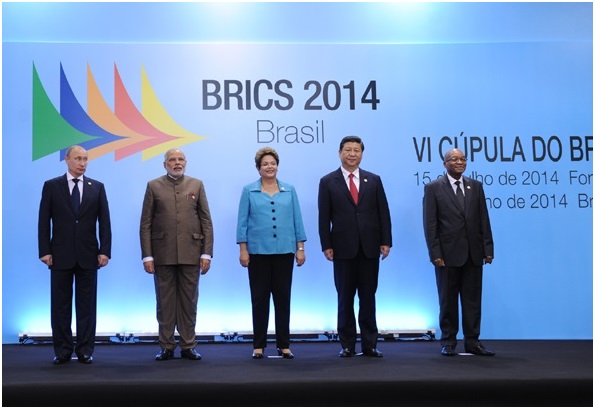I have posted before about the trend among nuclear nations such as Russia, Japan, China, France and the United States to make export of nuclear technology and nuclear fuel a major part of their international trade in the near future. Recently there was a major announcement by Vladimir Putin at a BRICS summit meeting of a Russian plan to create an energy association that will include a fuel reserve bank and an energy policy institute. This new set of institutions will include the so-called BRICS states, Brazil, Russia, India, China and South Africa. The BRICS states are pushing ahead aggressively with the construction of new nuclear reactors. Fifty five of the sixty six nuclear reactors under construction are in the BRICS states.
Russia has just signed a number of nuclear power cooperation agreements with other nations that coincided with a visit by the Russian President to South America. Russia signed one such agreement with Argentina which is building its first reactor. Russia hopes to put forward a successful bid to work on the third stage of the new reactor construction.
A Rusatom representative has just signed a memorandum of understanding with the president of Camargo Correa. The agreement includes construction of a spent fuel storage facility and a nuclear power reactor in Brazil. The document also supports the expansion of bilateral cooperation on the development of nuclear power in Brazil. One specific project in the agreement will be the expansion of technical and engineering facilities at the Brazilian Angra nuclear power plant and the construction of more new reactors in Brazil.
Putin has also held meeting with the new Indian Prime Minister, Narenda Modi to discuss expanding cooperation on energy and defense. Putin has been invited to visit the Kudankulam Unit 2 reactor construction site. Last December, the two countries signed an agreement to with respect to the construction of Kudankulam Unit 3 and Unit 4 reactors.
One of the most important parts of the new Russian plan is the launch of the New Development Bank and a Currency Reserve Pool for the BRIC nations. These two institutions together will have two hundred billion dollars in resources. The New Development Bank (NDB) with one hundred billion dollars is being seen as a BRICS alternative to the World Bank and the International Monetary Fund. The NDB will be headquartered in Shanghai, China. The top positions in the organization will be shared by Indian, Brazilian and Russian representatives. Putin said that the Currency Reserve Pool (CRP) with one hundred billion dollars is being created to "protect our countries from financial market crises."
Forty percent of the world's population resides in the BRICS countries which share twenty one percent of the world's GDP between them. In the past ten years, the BRICS states have seen their collective GDP grow by four hundred percent.
